
In this article, we will look at the main types of foot fungus.
All fungal infections are collectively referred to as yeast infection. Experts divide them into two main categories - onychomycosis and dermatomycosis. In the first case, microorganisms penetrate under the nail, in the second, the skin is affected. In addition, absolutely all types of foot fungus are classified taking into account the causative agent of the disease and the main symptoms.
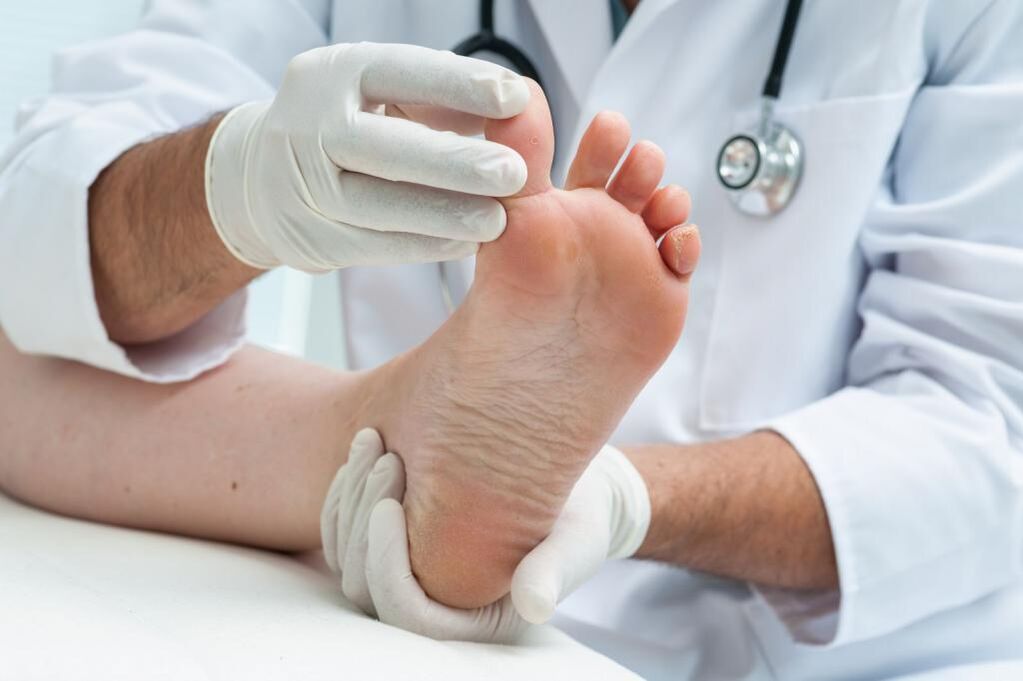
Main types
First of all, the type of fungus that affects the legs depends on the causative agent of the disease. Pathogenic microorganisms are divided into several groups: dermatophytes, yeasts and molds. They are able to cause common lesions such as:
- Onychomycosis;
- candidiasis;
- epidermophytosis;
- Rubrophytia.
The latter is the general name for a group of pathologies in which the feet are affected. All diseases are also divided into groups based on clinical manifestations: membrane, moccasin, vesicular.
Below we will look at the types of foot fungus, photos and treatment with alternative methods.
Rubrophytia
The second name of this disease is rubromycosis. It is distinguished by overcrowding of blood vessels, dryness and severe scaling. The pathology develops very slowly and almost imperceptibly for a person who has contracted an infection.
Mycosis of the feet in the form of bubbles is very unpleasant.
The first signs are itching and peeling, which becomes noticeable in the later stages of the disease. Nail damage also occurs at this stage. Externally, the disease is manifested by the appearance of blisters, crusts, plaques, pustules, localized over the entire surface of the sole. When a large number of plaques and bubbles appear, a person begins to experience painful sensations when walking.
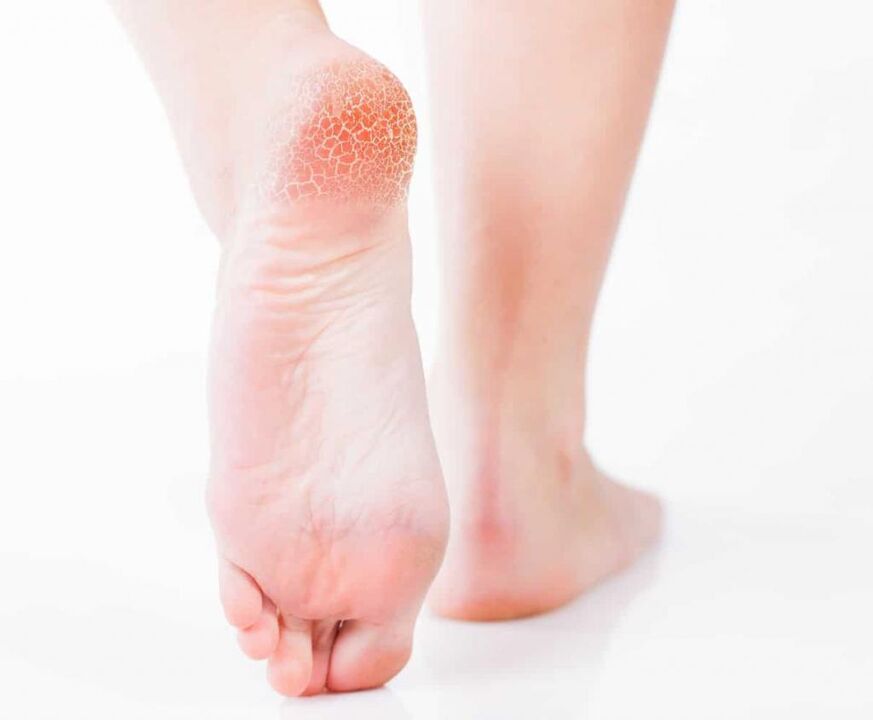
Determining the type of foot fungus (photo) plays a key role in treatment. Before prescribing treatment for rubrophytosis, it is necessary to conduct a microscopy and study the clinical picture. The lesions are removed using exfoliating agents (keratolytics). Most of these are salicylic acid based ointments and creams. The therapy is generally complex. Along with external agents, antifungal agents are prescribed.
If the disease is severe, you should start taking medication in the form of pills. Lesions of the nail plates are treated by removing them with emollients.
This type of foot fungus (see photo above) is characterized by a high degree of infectivity. It is enough to touch the things that the carrier of the infection is using. The likelihood of infection increases many times over if a person suffers from excessive sweating, has a weakened immune system, and damage to the feet.
The causative agent of the disease is the fungus Tr. Mentagrophytesvar. It is able to penetrate the granular layers and the stratum corneum of the skin, spread and cause severe reactions of allergic or other type:
- pain when walking, burning and itching;
- deformation and yellowing of the nails;
- the appearance of crusts, scales, painful cracks;
- erosion of the skin (maceration);
- the appearance of pustules, edema;
- rash of vesicles with a dense crust.
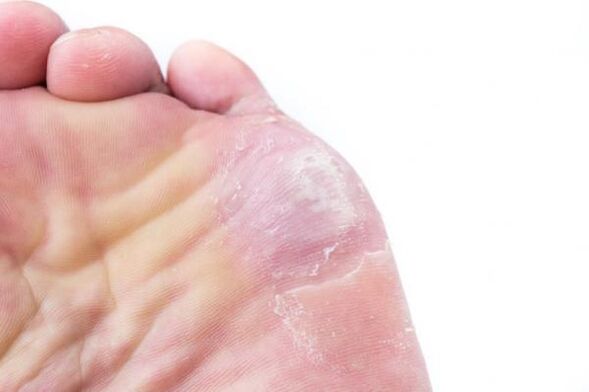
The diagnosis of this type of mycosis of the foot consists of the study of the external signs and the clinical picture. If the causative agent of the pathology is not evident, clinical research may be necessary, for example by examining the scraping under a microscope.
Treatment of rubrophytosis in acute form involves the use of drugs based on silver nitrate 0. 25%, calcium 10% and meta-dihydroxybenzene 1%. If allergic reactions occur, antihistamines should be used. The choice of the antifungal agent depends entirely on the clinical course of the disease and the individual characteristics of the patient's body.
What are the other types of foot fungus?
Candidiasis of the foot
This type of fungus occurs in patients much less frequently than epidermophytosis or rubromycosis. Pathology occurs under the influence of a fungus of the genus Candida. Such microorganisms live in the body of every person, however, they are considered to be conditionally pathogenic. That is, they do not pose a threat in small amounts, but their rapid multiplication can cause unpleasant symptoms and consequences. Uncontrolled reproduction of the fungus begins if there is a decrease in immunity during hypothermia, overwork or frequent stress. External factors include:
- wearing, especially in summer, uncomfortable shoes;
- injuries received at home or at work;
- constant maceration of the skin of the feet (skin exfoliation following prolonged exposure to water).
There are two types of candidiasis of the feet: hyperkeratotic and vesicular-pustular. The first form of candidiasis is characterized by thickening of the stratum corneum. On it, fairly wide grooves of light brown color begin to appear, which constantly peel off. For diagnostic purposes, exfoliation is performed and further study of the particles in which Candida fungi are found.
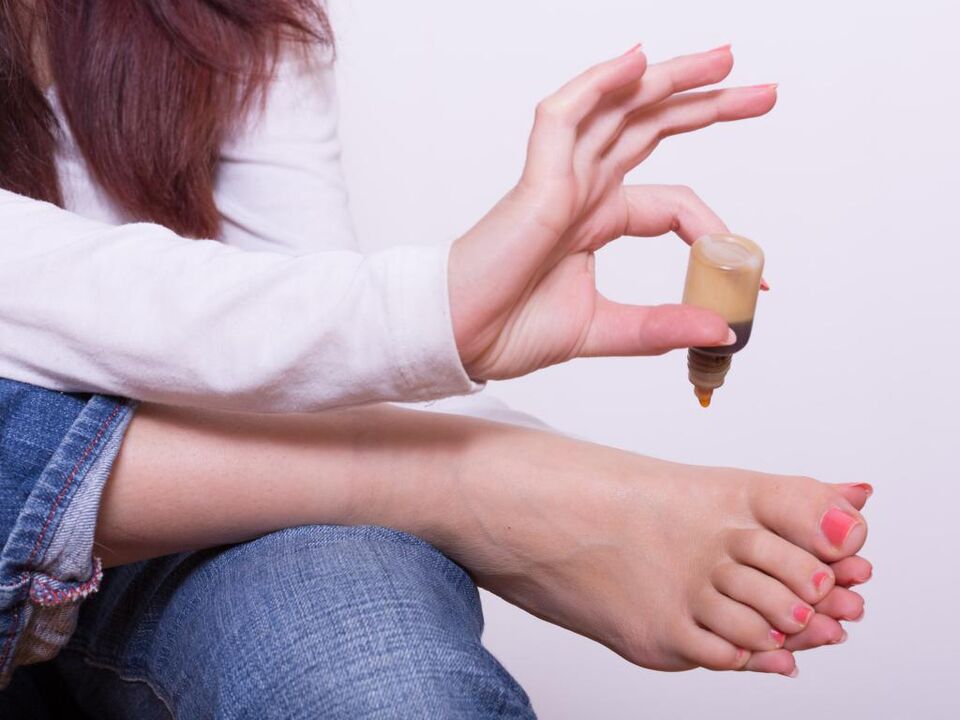
The viscous-pustular form of candidiasis is manifested by hyperemia (overcrowding of blood vessels), pronounced swelling, maceration. The affected skin areas are covered with pustules and small, flat blisters. After the extinction of inflammatory processes, peeling develops. The appointment of treatment is possible only after determining the exact diagnosis. The choice of drugs for this type of foot fungus with blisters is carried out on an individual basis. Most often, systemic and local drugs are presented.
Onychomycosis
This disease is a type of fungus of the foot, characterized by a fungal infection of the nail. You can get infected in public showers, saunas, baths, swimming pools. Scales containing a pathogenic microorganism separate quite easily from the nail plate and can remain on unpainted floors, rugs, mats and benches. High humidity not only allows them to survive, but also promotes active reproduction, and therefore the risk of infection increases significantly.
At the initial stage, the infection enters the epidermis of the feet, causing severe itching. In order to alleviate the unpleasant sensations, the person begins to comb the infected area, but the situation only worsens. The areas of the skin affected by the fungus are covered with small scratches and cracks, microorganisms begin to spread, penetrate under the nail plate, after which they begin to multiply uncontrollably.
Serious diseases such as diabetes or HIV, blood circulation disorders, nail trauma greatly increase the risk of infection.
Onychomycosis is classified into 3 types:
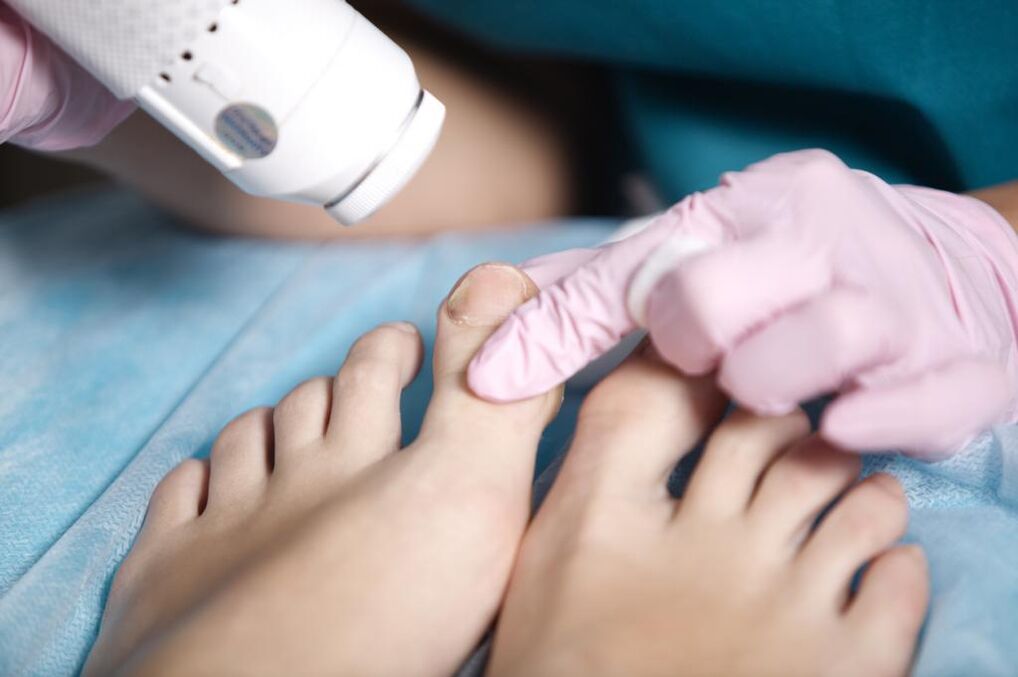
- Normotrophic. With this type of onychomycosis, a change in the color of the nail from normal to yellow-brown is observed. The natural shine, shape and thickness of the nails remain unchanged.
- Hypertrophic. There is a final change in the color of the nail, its shine disappears, the shape changes, thickening develops, and partial destruction begins.
- Onycholytic. The color of the affected nail turns brown, it becomes thinner, begins to break. His gradual separation from the bed begins. On the open part of the nail bed, uneven layers can be observed.
Therapy of this type of fungus on the palms and feet with topical drugs is ineffective due to the fact that the spores of the fungus are located under the nail. Before starting treatment, the nail should be removed. This is done with keratolytic drugs and patches are also used. In some cases, there is the possibility of mechanical nail removal: the particles of the nail that have died out are cut with a nail file or pliers. It is important to remember that all instruments used must be sterile.
The combined use of mechanical ablation and keratolytic patches is the most effective way to remove a diseased nail. From keratolytic agents, you can use a ready-made set, which contains a special ointment, limes for scratching the nail, a bandage. Once the nail plate has been removed, you should start taking systemic antimycotics.
It is quite difficult to determine the type of foot fungus from the photo.
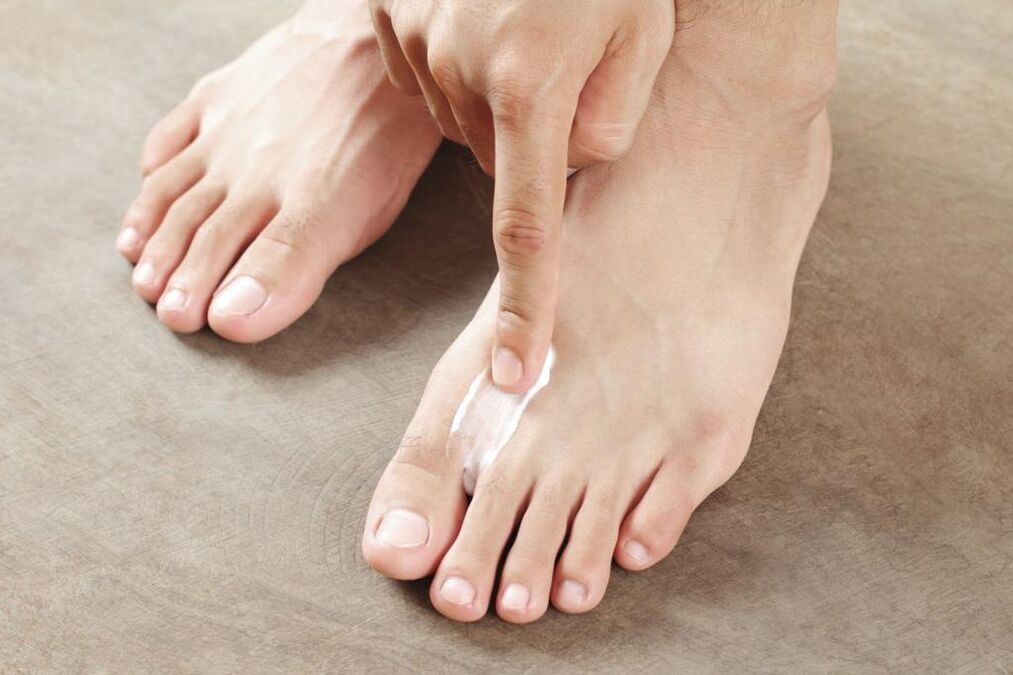
Interdigitated form (intertriginous)
The most common and unpleasant type of pathology is the intertriginous form of fungal infection. Appears quite often in the summer, begins to develop between the third and fourth toes. Over time, the lesion spreads to the areas between the other fingers.
At the very beginning, a small crack, funnel or sore appears in the crease that is between the fingers. It is surrounded by diaper rash or slightly greenish scaly skin. Most often the damage becomes wet, sometimes pus oozes out. The erased type of fungus is characterized by a pronounced or flour-like coat, as if there is flour on the surface of the finger. A similar impression occurs due to the large number of affected scales that separate from the skin. There is a slight itch that does not cause severe discomfort.
With an advanced form of the disease, there is delamination of the nails, severe enlargement, multiple cracks, corns resembling corneal compaction, pronounced yellowing.
In very rare cases, a disease of the weeping type develops - an oozing fungus. Its main difference is that vesicles are dumped on the affected areas - bubbles filled with liquid inside. Therapy should be carried out comprehensively. Antifungal agents are used as topical agents. The advanced form of the disease involves the use of systemic antimycotics. Treatment should be continued until the fungus has completely disappeared.
Squamous-hyperkeratotic form
This type of foot fungus (photo below) is not very common.
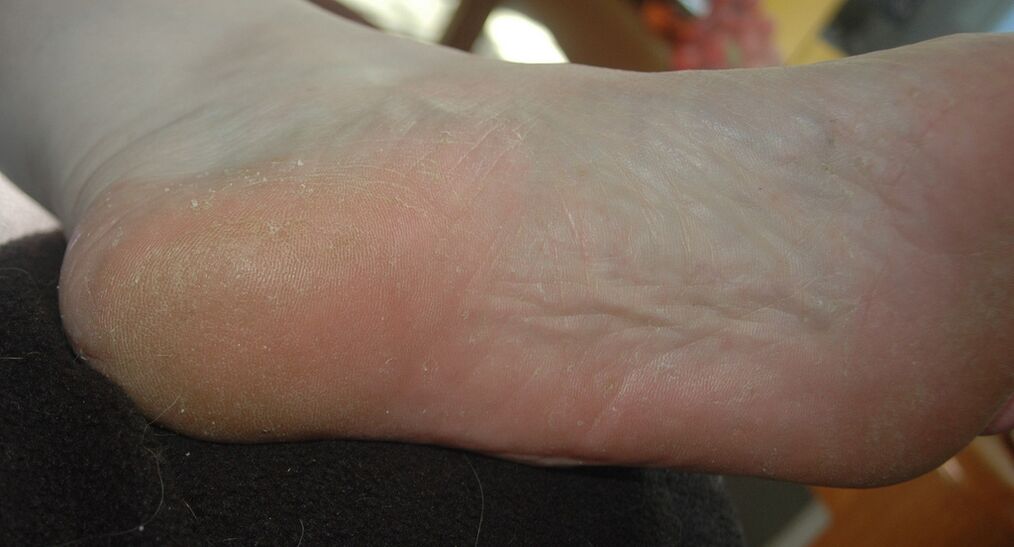
Squamosis is the process of penetration of pathogenic fungi into the outer skin cells. Hyperkeratosis is the formation of the stratum corneum, resulting in thickening of the dermis. In this regard, the scaly-hyperkeratotic form of mycosis has several other names, for example, "moccasin fungus" and "athlete's foot".
The type of squamous-hyperkeratotic mycosis is characterized by the following symptoms:
- The sole of the foot is covered with a thickened keratinized layer of the dermis, giving the impression that moccasins are worn on the foot.
- The sole enlargement occurs so strongly that it begins to become covered with large and rather thick calluses.
- Painful cracks appear on the corns.
- The peel takes a mucous form, a pattern on the skin is visible to the naked eye.
- Unbearable itching appears.
- Over time, the nails begin to thin, break and crumble.
When treating moccasin fungus, first of all, it is very important to remove the horny layer of the skin. This is done with the help of soap and soda foot baths, body wraps, salicylic compresses, and ichthyol ointments. Salicylic ointment is used in doses of up to 10%. Creams based on petroleum jelly, ointments containing lactic acid are effective. If you cannot cope with this task at home, you should seek help from a podiatric center. With the help of a hardware manicure, the specialist will carefully remove the keratinized dermis.
Further treatment of the type of foot fungus will depend on the type of pathogen. It should only be started after making a precise diagnosis. It is not recommended to treat moccasin mycosis without first removing the stratum corneum of the skin - the active components in the composition of the drug will not be able to pass through it and reach the focus of infection. As a result, all efforts will be canceled.
Photos of types of foot fungus cannot fully reflect all the unpleasant symptoms that a person experiences.
Dehydrated form
Blistering fungus, or as it is also called, dyshidratic yeast infection is the rarest type of disease. Its main manifestation is numerous vesicles combined into conglomerates. Blisters are vesicles filled with pus or nutrient fluid from the inside. When the turbidity of the liquid begins, the vesicles burst, the ulcers remain in their place. They begin to merge into a single line, forming pronounced scars on the skin. This is due to the drying and peeling of the layers of the skin.
About 70% of bladder fungus infections are accompanied by allergic rashes. A variety of bacteria and viruses begin to enter ulcers. As a result, the disease becomes mixed and the identification of the initial pathogen becomes more difficult. Therefore, you should immediately consult a doctor at the onset of the main symptoms (photo): he can quickly identify the type of foot fungus and begin treatment.

And it should be done immediately. First of all, before using antimycotic drugs, the acute process must be eliminated. It is better to entrust this task to a specialist: he can gently pierce the vesicles, treat the remaining ulcers with 2% boric acid and smear with a brilliant green solution or methylene blue.
Treatment of the disease in its neglected form involves the use of corticosteroid ointments. After elimination of the inflammatory process, it is recommended to use local antimycotic agents. This will remove the causative agent of the disease.
We continue to consider the names and types of foot fungus.
Form deleted
The fungus of the erased form is almost invisible, its symptoms are minimal. These include: slight itching, burning, mucous-like peeling, microcracks located in interdigital areas. If you do not see a specialist at the onset of the first signs of the disease, the pathology can turn into onychomycosis, which is much more difficult to treat. In this case, the detached nail will grow back from a month to six.
Treat mycosis of the gummed form with local preparations: ointments, creams, foams. They allow you to create a layer on the foot that will protect against other infections. It is not recommended to wash your feet within 24 hours of applying such medication.
Only in extreme cases can systemic treatment be prescribed. The problem is that these drugs are toxic and negatively affect certain internal organs, for example the liver. Accordingly, if there is any effect from the use of local remedies, it is better not to take pills.
Treatment of types of foot fungus with alternative methods
Photos of pathology presented in the article in large numbers do not negate a visit to the doctor.
It is quite easy to choose a drug now. However, many people prefer to treat the fungus with folk remedies. We offer several proven recipes:
- Clean the feet. The legs are warmed in a basin of hot water, scrubbed thoroughly with laundry soap and treated with a stiff foot brush for five minutes. The foam rinses off. Actions are repeated 4-5 times. Then the feet are wiped and smeared with cream.
- Chelidin baths. 50 g of herbs are poured with 1, 5 liters of boiling water, heated on a fire for 4-5 minutes, cooled. The feet should be kept in hot broth for 30 minutes. The duration of treatment is 14 days.
- Tea tree oil is a powerful antiseptic. It should be rubbed several times into the affected areas.
- You can get rid of itching and cracks with sour cream. She lubricates her legs before going to bed. The duration of treatment is 1 week.
- Baking soda. Eliminates burning and itching of the skin. The powder is mixed with water so as to obtain a thick mass. It is applied to the affected areas, wait for it to dry, then rinse off.
- Calendula. Flowers (50 gr. ) Are poured with boiling water (1: 2), insisted for 30 minutes, filtered. Infusion lubricated feet at night.

Prevention
The simplest preventive measures will significantly reduce the risk of infection. Only personal items should be used, nails should be treated with sterile instruments. When visiting public places such as baths, saunas, swimming pools, beaches, you should use your own shoes. By the way, try to choose it so that it is comfortable and allows your legs to breathe.
You need to worry about prevention in advance, so that later you will not have to deal with various types of foot fungus. The photo shows far from all the options for the development of the disease.















